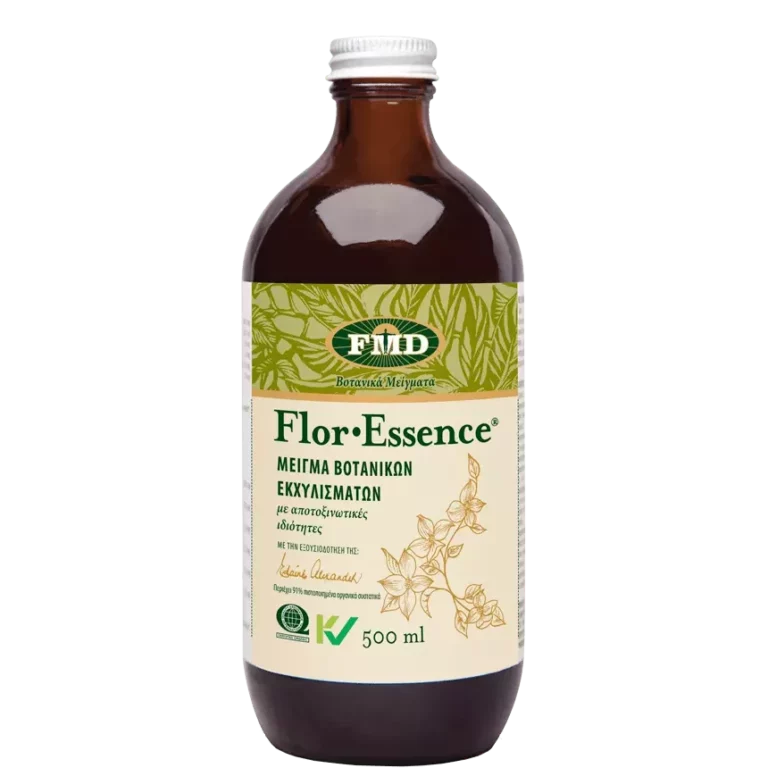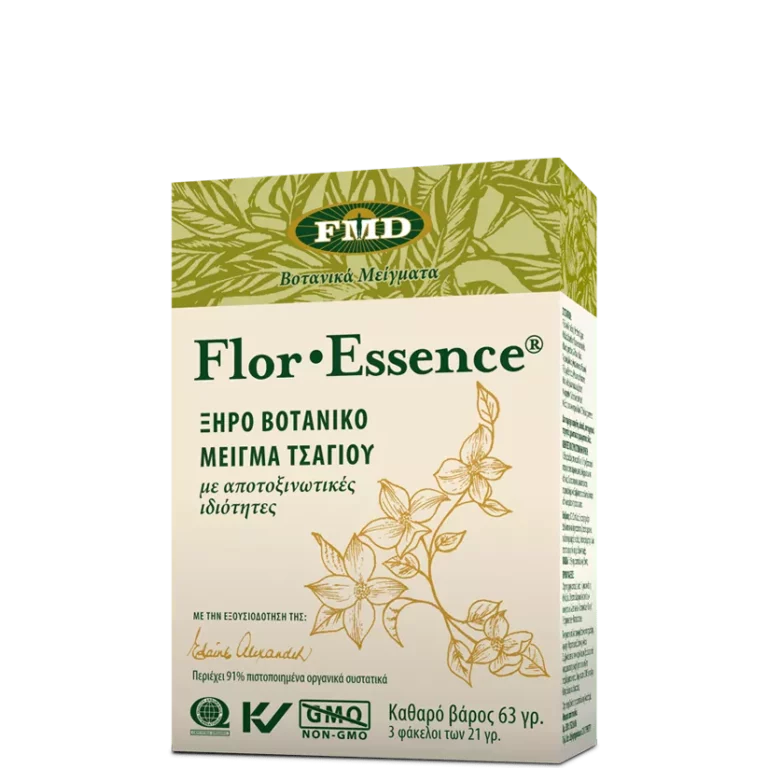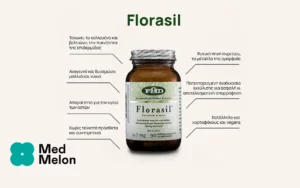Natural Sources of Mucilage: Slippery elm bark; marshmallow flowers, leaf and root; hollyhock flowers; hibiscus flowers; burdock root; kelp; flaxseeds; psyllium husks, aloe gel, Icelandic moss, etc.
Forms:
Dried herbs for teas; powdered slippery elm bark mucilage for tablets and chewables; liquid aloe vera gel; and alginates from kelp and other seaweeds.
Therapeutic Uses:
– Airline Travel Cold Prevention
– Antibacterial
– Anti-inflammatory
– Antimicrobial
– Antiviral
– Antioxidant
– Cellular Regeneration
– Cold Prevention
– Colds and Flu
– Constipation
– Cleansing
– Demulcent
– Detoxifying
– Digestive Disorders
– Dry Air Protection
– Dry Mouth and Throat
– High Cholesterol
– Hypercholesterolemia
– Hypertension
– Mucous Membrane Protection
– Gastrointestinal Disorders
– Laxative
– Poultice
– Skin Problems
– Sore Throat
– Soothing
– Throat Protection
– Weight loss
– Wintertime Cold Prevention
– Wounds
Overview:
The mucilage found in many medicinal herbs is made up of complex polysaccharides, otherwise known as mucopolysaccharides, that have many therapeutic properties. Mucilage has a soothing and cleansing effect on the respiratory and digestive tracts and is known to prevent the drying out of mucous membranes of the body. Mucilage in the diet can reduce inflammation, soothe and protect the throat and the entire digestive tract. Research has shown that herbs traditionally used for soothing the respiratory tract (i.e. slippery elm, coltsfoot, comfrey, mullein, and mallows) contain mucilage with a high binding affinity for receptors on these types of mucous membranes. Likewise, herbs used for soothing the digestive tract have high binding affinity for mucous membranes of the digestive tract (i.e. flax, psyllium, slippery elm, etc.). Supporting the integrity of the mucous membranes in the back of the throat can be a major defense against catching colds and flues in the winter, when furnaces are churning out dry dusty air. Scientific studies have shown that once mucous membranes are damaged, there is nothing to stop virus particles from getting into cells and multiplying. The same principle applies for preventing colds after taking airplane flights: drink lots of water and stock up on foods and teas rich in mucilage. People are always exposed to viruses and bacteria but it is only when mucous membranes fail that these microbes get a foothold. The most likely reason why people get more colds in the winter is not because there are more viruses around but because people’s houses become so dry from heating systems. For the digestive tract, mucilage can safely soothe sensitive stomachs and irritated intestinal linings while also aiding in the gentle cleansing of toxins and other accumulations in the colon. Mucilage can also be used to gently treat constipation and diarrhea.
Mucilage – Excellent Source of Soluble Fibre:
Mucilage is also an excellent source of dietary soluble fiber. In 1998, the Food and Drug Administration (FDA) authorized the use of a health claim in the labeling of foods and dietary supplements containing soluble fibre. The health claim states that, “diets low in saturated fat and cholesterol that include 7 grams of soluble fiber per day may reduce the risk of heart disease by lowering cholesterol”. Clinical studies have also shown significant benefits for soluble fibre in reducing high vascular tension in people having diets low in protein, fiber, or both. Soluble fibre and mucopolysaccharides also help the body to get rid of pathogenic gut bacteria and support beneficial intestinal microflora that are important for overall good health.
Chemistry:
Mucilage is made up of complex polysaccharides otherwise known as muco-polysaccharides, more recently referred to as glycosaminoglycans. Polysaccharides can range in complexity from 3 monosaccharide units linked together to several thousand monosaccharide units all linked together, such as found in the mucilaginous gel of aloe plants. Mucilage and/or mucopolysaccharides bind and absorb water very effectively. For example, the center, or filet, of the aloe plant consists of 99.5 percent water and 0.5 percent solids, largely mucopolysaccharides. Another herb, Russian comfrey (Symphytum peregrinum Ledeb.), contains 29% mucopolysaccharide (of glucose and fructose) and gum consisting of L(-)-xylose, L-rhamnose, L-arabinose, D-mannose and D-glucuronic acid (Reference: James A. Duke 1983. Handbook of Energy Crops. Unpublished data). Mucopolysaccharides, according to Encyclopedia.com, are technically described as a class of polysaccharide molecules, also known as glycosaminoglycans, composed of amino-sugars chemically linked into repeating units that give a linear unbranched polymeric compound. The monomeric amino-sugar constituents are ordinary monosaccharides that contain a nitrogen atom covalently bound to one of the ring carbons of the sugar portion. The nitrogen is, in turn, either bonded to two atoms of hydrogen (termed a primary amino-group) or to another carbon atom (hence, a substituted amino-group). The mucopolysaccharides are quite similar structurally to the more well-known animal and plant polysaccharides such as glycogen and starch. Chitin is a particularly plentiful mucopolysaccharide and serves, like cellulose does in plants, as a structural polysaccharide for many phyla of lower plants and animals. The shells of lobsters, crayfish, crabs, insects, and many other invertebrate organisms contain mostly chitin complexed with inorganic salts. Another important compound of this class is hyaluronic acid, a molecule found universally in the connective tissues of all animals and in the fluids of their eyes and joints. Hyaluronic acid in association with protein has been isolated from various organisms and such complexes are thought to bind water in the cellular spaces, thus holding cells together in a jellylike matrix. In addition, such substances may provide the fluids of joints with lubricating and shock-absorbing qualities. Many other mucopolysaccharides are, like hyaluronic acid, associated with proteins; the separation between such proteoglycans and glycoproteins is somewhat arbitrary, but the latter compounds are distinguished by their relative paucity of sugars.
Suggested Amount:
Drink several cups of mucilage-rich tea per day or get 1-2 tbsp from flaxseed, slippery elm bark or aloe. The necessary dosage for Icelandic moss lichen is 0.48g daily from carefully prepared lozenges (Caution: Icelandic moss can be toxic if not properly prepared. If preparations are unavailable, then use the other safe, food-type herbs listed above).
Drug Interactions:
Soluble fibre may reduce the effectiveness of other medications and should be taken at a separate time of day from these. For persons taking medications, consult with your physician prior including sources of soluble fibre in your diet for guidance on when and when not to take the soluble fibre supplements. Also note that the iodine content in alginate supplements may cause hyper- or hypothyroidism, if taken in excessive amounts, and may interfere with existing treatment for abnormal thyroid function.
Contraindications:
Soluble fibre may reduce the effectiveness of other medications and should not be taken at the same time as these. For persons taking medications, consult with your physician prior to including major sources of soluble fibre in your diet to receive guidance on when and when not to take the soluble fibre supplements. Also note that the iodine content in alginate supplements may cause hyper- or hypothyroidism, if taken in excessive amounts, and may interfere with existing treatment for abnormal thyroid function. In view of this, ingestion of alginate supplements containing significant quantities of iodine is contraindicated for children. The iodine content in alginates may cause acne eruptions in adolescents and may aggravate pre-existing acne. Elevated urinary arsenic concentrations have also been traced to the ingestion of kelp products. As such, alginate supplements used as a food and/or for a medicinal product should not exceed arsenic levels above 3.0 ppm and lead levels above 10.0 ppm based on the internationally recognized Food Chemicals Codex.
Side Effects:
Mucilage from some plants, particularly the alginates from kelp, may cause digestive upset for sensitive persons, including bloating and gas. This problem is said to be transitory, as your body gets used to the complex polysaccharides, and should not persist for more than approximately two weeks. Hyperthyroidism can be caused by the excessive ingestion of iodine. Typical symptoms of hyperthyroidism include: weight loss, sweating, fatigue, heart palpitations and frequent soft stools. The iodine content in kelp products has been associated with acne eruptions and may aggravate pre-existing acne. Elevated urinary arsenic concentrations have also been traced to the ingestion of kelp products. As such, alginate extracts used as a food and/or for a medicinal product should not exceed arsenic levels above 3.0 ppm and lead levels above 10.0 ppm based on the internationally recognized Food Chemicals Codex.
References:
Bliss DZ, Jung HJ, Savik K, Lowry A, LeMoine M, Jensen L, Werner C, Schaffer K. 2001. Supplementation with dietary fiber improves fecal incontinence. Nurs Res 2001 Jul-Aug; 50(4): 203-13.
Bradley PR (ed). 1992b. Slippery Elm Bark in British Herbal Compendium Vol. 1. British Herbal Medicine Association, Bournemouth, Dorset, p. 204.
Burke V, Hodgson JM, Beilin LJ, Giangiulioi N, Rogers P, Puddey IB. 2001. Dietary protein and soluble fiber reduce ambulatory blood pressure in treated hypertensives. Hypertension 2001 Oct; 38(4): 821-6.
Gong YF, Huang ZJ, Qiang MY, Lan FX, Bai GA, Mao YX, Ma XP, and Zhang FG. 1991. Suppression of radioactive strontium absorption by sodium alginate in animals and human subjects. Biomed Environ Sci 4 (3): 273-282.
Kempe C, Gruning H, Stasche N, Hormann K. 1997. [Icelandic moss lozenges in the prevention or treatment of oral mucosa irritation and dried out throat mucosa] Laryngorhinootologie. 1997 Mar; 76(3): 186-8. German.
Additional Information:
Other Tips for Preventing Colds and Flu:
Aside from eating foods and drinking teas rich in mucilage on a daily basis, it is important to maintain a healthy level of humidity in one’s house and workplace. Keeping a pot of water on low on the stove at night (with proper precautions taken to prevent fire) or using an air humidifier can cut air dryness dramatically in a household. This is important for health, especially at night when people are sleeping and not swallowing enough to keep their throats moist. Nature is naturally humidified but modern man-made buildings are often very substandard when it comes to air quality and humidity. Anthocyanins and proanthocyanidins from berries and grape seeds also support the body’s production of “mucopolysaccharides” that give membranes structural integrity.
Aloe Mucopolysaccharide Research:
According to Dr. Ivan Danhof, M.D., Ph.D., different sizes of mucopolysaccharide molecules provide different therapeutic benefits. Aloe vera mucopolysaccharides (MPS) are long-chain sugar molecules composed of individual mannose and glucose sugar molecules connected together. There is a wide range in the sizes of the MPS molecules. Dr. Danhof reports that the smallest MPS (50-600 molecules) are responsible for reducing blood sugar and are anti-inflammatory. Medium-sized MPS (up to 1,500 molecules) are very effective intracellular antioxidants and free radical scavengers. Large MPS (up to 5,000 molecules) have a direct anti-bacterial and anti-viral effect on the body. And the largest MPS (up to 9000 molecules) work as immune modulators, helping to amplify the body’s immune responses.
Icelandic Moss Mucilage Research:
Icelandic Moss has been used to treat inflammation and dryness of the pharyngeal mucosa in naturopathy for many years. The necessary concentration of Icelandic Moss and its therapeutic effectiveness were analyzed in a randomized-controlled clinical study with sixty-one patients who recently underwent nasal surgery. The patients suffered especially from dryness and inflammation due to breathing only through the mouth while the nose was permanently closed by a nasal package. Coating, dryness, and inflammation of the mucosa, lymph nodes, tongue, the tolerance of the drug, and symptoms like hoarseness and sore throat were documented. Icelandic moss lozenges were given from the first to the fifth day after the operation. Treatment with Icelandic moss directly reduced all pathological symptoms. A dose of 0.48 g per day was sufficient. It can be recommended after nasal surgery, after intubation and for simple infections of the throat.






